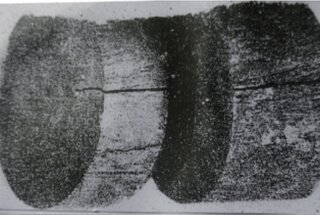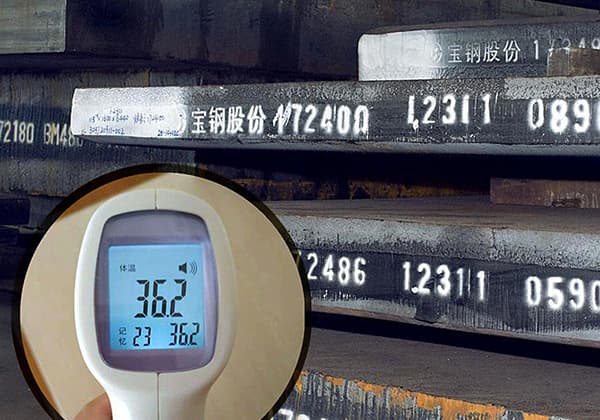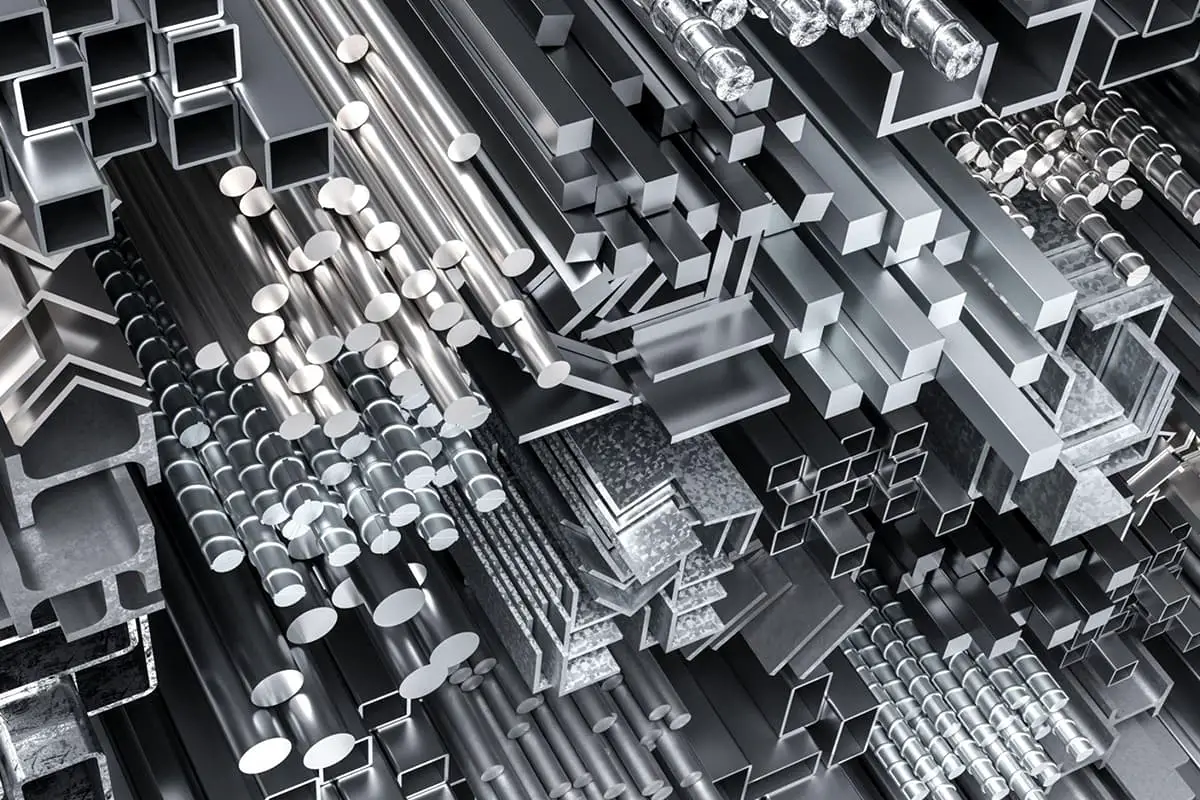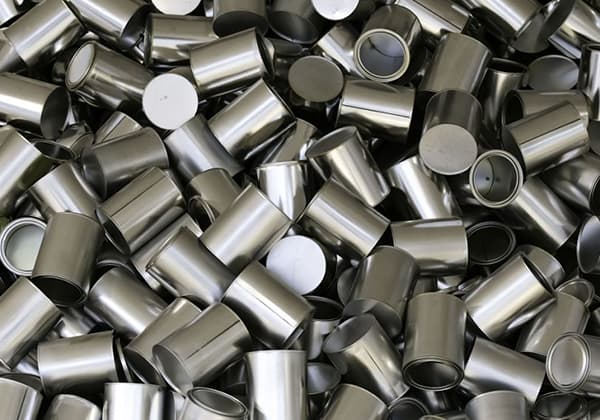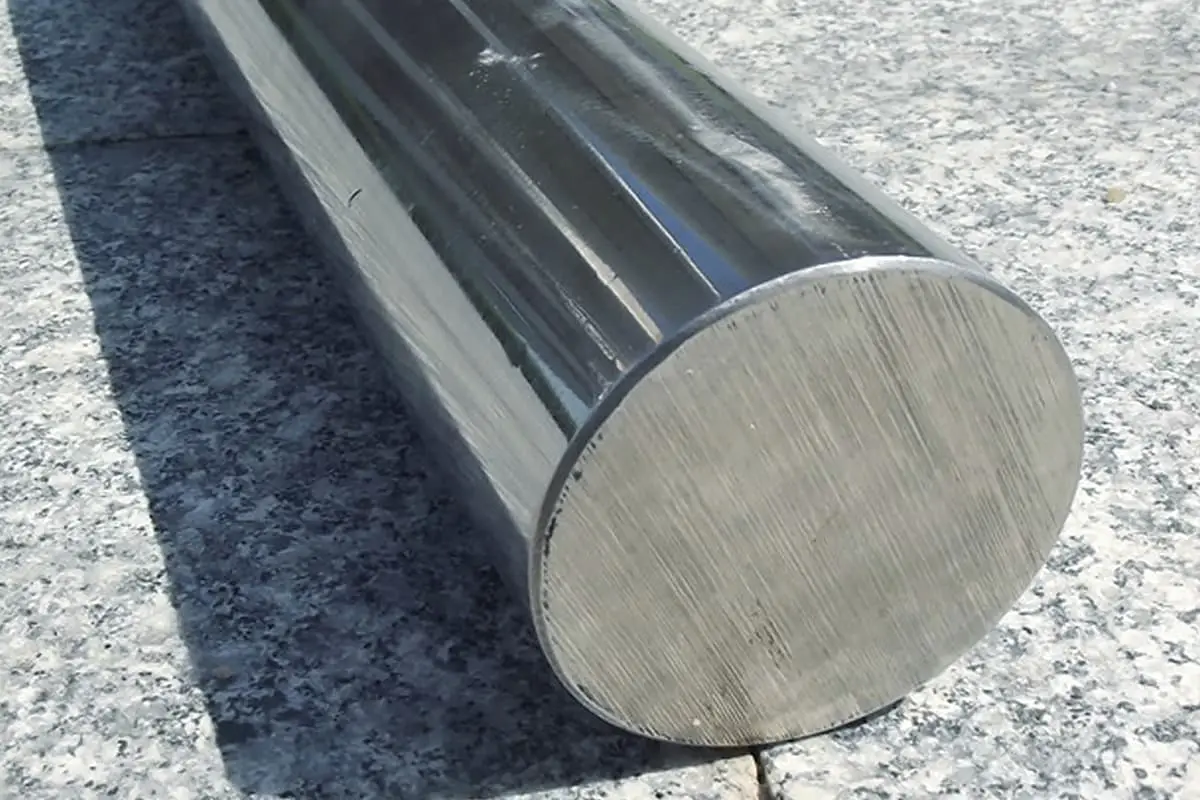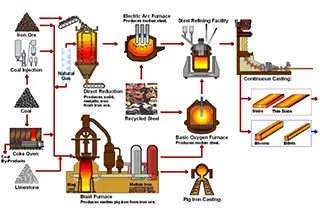
Steel pipes are hollow, elongated materials widely utilized as conduits for fluid transmission, such as oil, natural gas, water, coal gas, and steam. With equivalent bending and torsional strength, they are lighter in weight and thus commonly used in manufacturing mechanical parts and engineering structures. They are also often employed in the production of conventional […]
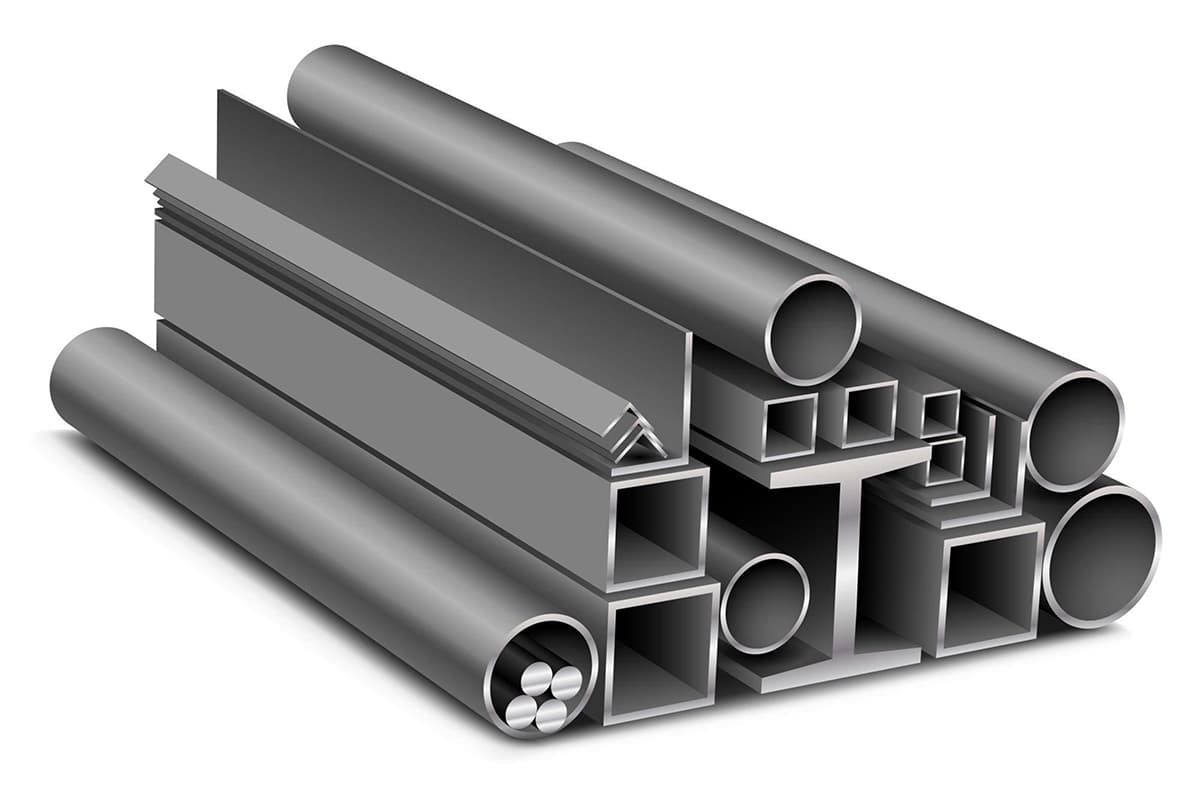
Steel pipes are hollow, elongated materials widely utilized as conduits for fluid transmission, such as oil, natural gas, water, coal gas, and steam. With equivalent bending and torsional strength, they are lighter in weight and thus commonly used in manufacturing mechanical parts and engineering structures. They are also often employed in the production of conventional weaponry, gun barrels, and artillery shells.
Steel pipes can be divided into two main categories: seamless and welded (seamed) pipes.
Based on their cross-sectional shapes, they can be further classified into circular and special-shaped pipes. While circular steel pipes are the most widely used, other shapes like square, rectangular, semicircular, hexagonal, equilateral triangular, and octagonal are also available.
All steel pipes that bear fluid pressure are subjected to hydraulic tests to verify their pressure resistance and quality. To pass, they must show no leakage, wetting, or expansion under the specified pressure. Some pipes also undergo flanging, flaring, or flattening tests based on standards or specific requirements.
Seamless steel pipes are made by piercing a steel ingot or a solid tube blank to create a capillary tube, which is then hot-rolled, cold-rolled, or cold-drawn. The specifications of seamless steel pipes are indicated by their outer diameter and wall thickness in millimeters. They can be further divided into hot-rolled and cold-rolled (drawn) seamless steel pipes.
Hot-rolled seamless steel pipes come in various types, including general steel pipes, low and medium pressure boiler steel pipes, high-pressure boiler steel pipes, alloy steel pipes, stainless steel pipes, oil cracking pipes, geological steel pipes, and others.
Cold-rolled (drawn) seamless steel pipes, in addition to the types mentioned above, also include carbon thin-walled steel pipes, alloy thin-walled steel pipes, stainless thin-walled steel pipes, and special-shaped steel pipes.
Hot-rolled seamless pipes generally have an outer diameter greater than 32mm and a wall thickness between 2.5-7.5mm. Cold-rolled seamless steel pipes can have an outer diameter as small as 6mm, a wall thickness as thin as 0.25mm, and thin-walled pipes can have an outer diameter as small as 5mm with a wall thickness less than 0.25mm. The dimensional accuracy of cold-rolled pipes is higher than that of hot-rolled pipes.
Standard seamless steel pipes are typically made from high-quality carbon structural steels like 10, 20, 30, 35, 45, or low-alloy structural steels like 16Mn, 5MnV, or alloy structural steels like 40Cr, 30CrMnSi, 45Mn2, 40MnB through hot-rolling or cold-rolling. Seamless pipes made from low-carbon steels like 10, 20 are primarily used for fluid transportation pipelines. Meanwhile, seamless pipes made from medium carbon steels like 45, 40Cr are used to manufacture mechanical parts, such as those found in cars and tractors.
Seamless steel pipes are generally used, with an emphasis on ensuring strength and flatness testing. Hot-rolled steel pipes are delivered in a hot-rolled or heat-treated state, while cold-rolled pipes are delivered in a heat-treated state. Seamless steel pipes for low to medium pressure boilers are used to manufacture various low and medium pressure boilers, superheated steam pipes, boiling water pipes, water-cooled wall pipes, and locomotive boiler superheated steam pipes, large smoke pipes, small smoke pipes, and arch brick pipes.
High-quality carbon structural steel hot-rolled or cold-rolled (dialed) seamless steel pipes are primarily manufactured from 10, 20 steel. In addition to ensuring chemical composition and mechanical properties, water pressure tests, edge rolling, flaring, and flatness tests are required. Hot-rolled pipes are delivered in a hot-rolled state, and cold-rolled (dialed) pipes are delivered in a heat-treated state.
High-pressure boiler steel pipes are primarily used to manufacture high-quality carbon structural steel, alloy structural steel, and heat-resistant stainless seamless steel pipes for high-pressure and above steam boiler pipelines. These boiler pipes often operate under high temperature and pressure. The pipes undergo oxidation and corrosion under the action of high-temperature flue gas and steam, thus they require a high endurance strength, high oxidation resistance, and good structural stability.
Steel grades used include 20G, 20MnG, 25MnG of high-quality carbon structural steel; 15MoG, 20MoG, 12CrMoG, 15CrMoG, 12Cr2MoG, 12CrMoVG, 12Cr3MoVSiTiB of alloy structural steel; and commonly used heat-resistant stainless steel 1Cr18Ni9, 1Cr18Ni11Nb.
In addition to ensuring chemical composition and mechanical properties, high-pressure boiler pipes must undergo water pressure testing on a per-root basis, as well as expansion and flatness tests. The steel pipes are delivered in a heat-treated state. Furthermore, the finished steel pipe’s microstructure, grain size, and decarburization layer also have certain requirements.
Seamless steel pipes are used for geological drilling and oil drilling; to explore the underground rock layer structure, groundwater, oil, natural gas, and mineral resources, wells are drilled using drilling machines. Oil and natural gas extraction cannot be separated from drilling. Seamless steel pipes used for geological drilling and oil exploration are the main equipment for drilling, including outer tubes for core drilling, inner tubes for core drilling, casings, and drill rods. The drilling pipes must work at depths of several kilometers, under extremely complex conditions. The drill rod withstands tension, compression, bending, torsion, and unbalanced impact loads, as well as mud and rock abrasion.
Therefore, the pipe material must have sufficient strength, hardness, wear resistance, and impact toughness. The steel used for the pipe is represented by “DZ” (the Chinese pinyin initials for geology) plus numbers representing the steel yield point. Commonly used steel numbers are DZ45’s 45MnB, 50Mn; DZ50’s 40Mn2, 40Mn2Si; DZ55’s 40Mn2Mo, 40MnVB; DZ60’s 40MnMoB, DZ65’s 27MnMoVB. The steel pipes are all delivered in a heat-treated state.
Petroleum cracking tubes: These are seamless tubes used for furnace tubes, heat exchanger tubes, and pipelines in oil refineries. They are commonly made from high-quality carbon steel (10, 20), alloy steel (12CrMo, 15CrMo), heat-resistant steel (12Cr2Mo, 15Cr5Mo), and stainless steel (1Cr18Ni9, 1Cr18Ni9Ti). In addition to verifying the chemical composition and various mechanical properties of the steel tubes, it is also necessary to ensure water pressure, flattening, flaring tests, and to verify surface quality and non-destructive inspection. The steel tubes are delivered in a heat-treated state.
Stainless steel tubes: These are hot-rolled and cold-rolled stainless steel tubes made from various types of stainless steel. They are widely used in oil and chemical equipment pipelines and various stainless steel structural components. In addition to ensuring the chemical composition and mechanical properties, any steel tubes used to withstand fluid pressure must pass water pressure tests. Various specialty steel tubes must meet certain conditions as prescribed.
Welded steel tubes: Also known as welded tubes, these are made by shaping steel plates or strips and then welding them. They are divided into straight seam welded tubes and spiral welded tubes based on the form of the weld seam. They are further divided into general welded tubes, galvanized welded tubes, oxygen blowing tubes, wire casing tubes, metric welded tubes, roller tubes, deep well pump tubes, automotive tubes, transformer tubes, electrically welded thin-walled tubes, electrically welded shaped tubes, and spiral welded tubes, based on their application.
General welded tubes: These tubes are used to transport low-pressure fluids. They are made from Q195A, Q215A, Q235A steel. Other types of easily welded soft steel can also be used. Water pressure, bending, and flattening tests are required for these tubes, and there are specific requirements for surface quality. They are usually delivered in lengths of 4-10m, often requiring fixed length (or double-length) delivery.
The specifications of the welded tubes are expressed in nominal diameters (in millimeters or inches), which differ from the actual size. Welded tubes have two types based on wall thickness: regular steel tubes and thickened steel tubes, and two types based on tube end form: threaded and non-threaded.
As welding steel tube technology continues to improve and processing becomes simpler, welded tubes are now replacing some seamless tubes. Welded steel tubes can now be produced in sizes larger than 219mm (8 inches).
Galvanized Steel Pipe: To enhance the corrosion resistance of steel pipes, general steel pipes (black pipes) are galvanized. Galvanized steel pipes come in two types: hot-dip galvanized and electro-galvanized. Hot-dip galvanizing provides a thicker coating, while electro-galvanizing is more cost-efficient.
Oxygen Blowing Pipe: Used for oxygen blowing in steelmaking, typically small-diameter welded steel pipes, with sizes ranging from 3/8 inch to 2 inches. They are made from 08, 10, 15, 20, or Q195-Q235 steel strips. To prevent corrosion, some are treated with aluminum infiltration.
Electrical Conduit: This is a standard carbon steel welded pipe, used in concrete and various structural power distribution projects. The common nominal diameter ranges from 13-76mm. The conduit walls are thin, often coated or galvanized for use, and required to pass a cold bending test.
Metric Welded Pipe: This type of welded steel pipe is denoted in the form of seamless pipe specifications, represented by outer diameter * wall thickness in millimeters. It’s made from ordinary carbon steel, high-quality carbon steel, or general low-alloy steel hot or cold strip welding, or after hot strip welding, it is produced by cold drawing method.
The metric welded pipe is divided into general and thin-walled types. The general type is used as structural parts, such as drive shafts, or for fluid transport. Thin-walled pipes are used to manufacture furniture, light fixtures, etc., ensuring the strength of the steel pipe and passing the bending test.
Roller Pipe: This refers to the welded steel pipe used for belt conveyor rollers, generally made from Q215, Q235A, B steel, and 20 steel, with diameters of 63.5-219.0mm. The pipe’s bending degree, end face perpendicularity to the centerline, and ovality are subject to specific requirements, generally undergoing hydraulic and flattening tests.
Transformer Pipe: This type of pipe is used to manufacture transformer heat dissipation pipes and other heat exchangers. It’s made from ordinary carbon steel and must pass flattening, flaring, bending, and hydraulic tests.
The steel pipes are delivered in fixed or multiple lengths, with specific requirements for the bending degree of the steel pipe. Special-shaped Pipe: These are square pipes, rectangular pipes, cap-shaped pipes, hollow rubber steel door and window pipes welded from ordinary carbon structural steel and 16Mn steel strips. They are mainly used as agricultural machinery parts, steel windows and doors, etc.
Welded Thin-Wall Pipe: Primarily used for manufacturing furniture, toys, light fixtures, etc. In recent years, thin-wall pipes made of stainless steel strips have seen wide applications in high-end furniture, decoration, railings, etc.
Spiral Welded Pipe: This is created by coiling low-carbon structural steel or low-alloy structural steel strips at a certain helical angle (called forming angle) into a pipe blank, then welding the pipe seam together. It allows the production of large-diameter steel pipes using narrower steel strips. Spiral welded pipes are mainly used for oil and natural gas transportation pipelines, with specifications represented by outer diameter * wall thickness. Spiral welded pipes come in single-sided and double-sided welding, and the pipe must ensure hydraulic testing, tensile strength of the weld, and cold bending performance comply with the regulations.
(1) Seamless tubes – hot-rolled tubes, cold-rolled tubes, cold-drawn tubes, extruded tubes, pushed tubes.
(2) Welded tubes:

(1) Simple cross-section steel tubes – circular steel tubes, square steel tubes, elliptical steel tubes, triangular steel tubes, hexagonal steel tubes, rhombus steel tubes, octagonal steel tubes, semi-circular steel tubes, others.
(2) Complex cross-section steel tubes – unequal hexagonal steel tubes, five-petal plum blossom-shaped steel tubes, double convex steel tubes, double concave steel tubes, melon seed-shaped steel tubes, conical steel tubes, corrugated steel tubes, shell steel tubes, others.
Thin-walled steel tubes, thick-walled steel tubes.
Steel tubes for pipelines, steel tubes for thermal equipment, steel tubes for mechanical industry, steel tubes for petroleum and geological drilling, steel tubes for containers, steel tubes for chemical industry, steel tubes for special purposes, others.
Seamless steel pipes are elongated steel materials with a hollow cross-section and no seams around their periphery. These pipes, due to their hollow cross-section, are widely used in fluid transmission pipelines, such as pipes for transporting oil, natural gas, coal gas, water, and certain solid materials.
Compared to solid steel materials like round steel, seamless steel pipes are lighter in weight while retaining the same bending and torsional strength, making them economical cross-section steel materials. These are extensively utilized in manufacturing structural components and mechanical parts, such as oil drilling rods, car drive shafts, bicycle frames, and steel scaffolding used in construction.
Manufacturing annular parts from steel pipes improves material utilization, simplifies the manufacturing process, saves materials, and reduces processing time. This method is now extensively used in applications like rolling bearing rings and jacks. Steel pipes are also indispensable materials for various conventional weapons, with gun barrels and cannons being manufactured from them.
Steel pipes can be categorized into round and special-shaped pipes based on the cross-sectional area. Given that the circular area is the largest under the condition of equal circumference, round pipes can transport more fluid. Moreover, the force is more evenly distributed when a circular cross-section pipe withstands internal or external radial pressure, hence, most steel pipes are round.
However, round pipes have certain limitations. For instance, in the case of planar bending, square or rectangular pipes exhibit greater bending resistance.
Therefore, square or rectangular pipes are commonly used in the skeletal structures of agricultural machinery and steel-wood furniture. Depending on the application, special-shaped steel pipes with other cross-sectional shapes are also required.
1. Seamless steel pipes for structural purposes (GB/T8162-1999) are utilized for general structures and mechanical frameworks.
2. Seamless steel pipes for fluid transport (GB/T8163-1999) are commonly used for the transportation of water, oil, gas, and other fluids.
3. Seamless steel pipes for low and medium pressure boilers (GB3087-1999) are employed in the manufacturing of various structural components in low and medium pressure boilers, including superheated steam pipes, boiling water pipes, locomotive boiler superheated steam pipes, large flues, small flues, and arch brick pipes. These pipes are made of high-quality carbon structural steel through hot rolling or cold drawing (rolling).
4. Seamless steel pipes for high-pressure boilers (GB5310-1995) are used in the fabrication of water-tube boilers’ heating surfaces that operate under high pressures and above. These pipes are composed of high-quality carbon steel, alloy steel, and stainless heat-resistant steel.
5. High-pressure seamless steel pipes for fertilizer equipment (GB6479-86) are suitable for chemical equipment and pipelines that function at a temperature range of -40 to 400°C and a pressure of 10 to 30Ma. These pipes are made of high-quality carbon structural steel and alloy steel.
6. Seamless steel pipes for petroleum cracking (GB9948-88) are appropriate for furnace tubes, heat exchangers, and pipelines in petroleum refineries.
7. Steel pipes for geological drilling (YB235-70) are supplied for core drilling by geological departments. Depending on the application, these pipes can be divided into drill rods, drill collars, core pipes, casing pipes, and precipitation pipes.
8. Seamless steel pipes for diamond core drilling (GB3423-82) are used for drill rods, core rods, and casings in diamond core drilling.
9. Petroleum drilling pipes (YB528-65) are seamless steel pipes with thickened ends used for petroleum drilling. These pipes come in two types: threaded and non-threaded. Threaded pipes are connected with a joint, while non-threaded pipes are connected by welding to the tool joint.
10. Seamless carbon steel pipes for ships (GB5213-85) are used in the manufacture of ship’s Class I pressure pipe systems, Class II pressure pipe systems, boilers, and superheaters. Carbon steel seamless pipes have a maximum working temperature of 450°C, while alloy steel seamless pipes can withstand temperatures above 450°C.
11. Seamless steel pipes for automobile half-shaft casings (GB3088-82) are hot-rolled seamless pipes made from high-quality carbon structural steel and alloy structural steel, used for manufacturing car half-shaft casings and driveline axle housings.
12. High-pressure fuel pipes for diesel engines (GB3093-86) are cold-drawn seamless steel pipes used for making the injection system of diesel engines.
13. Precision inner diameter seamless steel pipes for hydraulic and pneumatic cylinders (GB8713-88) are cold-drawn or cold-rolled precision seamless steel pipes with precise inner diameter sizes for manufacturing hydraulic and pneumatic cylinders.
14. Cold-drawn or cold-rolled precision seamless steel pipes (GB3639-83) are used for mechanical structures and hydraulic equipment, featuring high dimensional accuracy and good surface smoothness. Using precision seamless steel pipes for mechanical structures or hydraulic equipment can significantly save machining time, improve material utilization, and enhance product quality.
15. Stainless steel seamless pipes for structures (GB/T14975-1994) are hot-rolled (extruded, expanded) and cold-drawn (rolled) seamless pipes made of stainless steel, widely used in chemical, petroleum, textile, medical, food, machinery, and other industries for corrosion-resistant pipelines, structural components, and parts.
16. Stainless steel seamless pipes for fluid transport (GB/T14976-1994) are hot-rolled (extruded, expanded) and cold-drawn (rolled) seamless pipes made of stainless steel, intended for conveying fluids.
17. Special-shaped seamless steel pipes refer to seamless steel pipes with shapes other than round. Depending on the different dimensions of the cross-sectional shape, they are further divided into seamless steel pipes with equal wall thickness (Code D), unequal wall thickness (Code BD), and variable diameter (Code BJ). Special-shaped seamless steel pipes are widely used in various structural components, tools, and mechanical parts. Compared to round pipes, special-shaped pipes generally have larger moments of inertia and section modulus, providing greater bending and torsional resistance, significantly reducing structural weight, and saving steel.
Welded steel pipes, also known as welded pipes, are made by rolling steel plates or strips into shape and then welding them together. The production process of welded steel pipes is simple, efficient, and comes in a variety of specifications with minimal equipment requirements. However, their strength is generally lower than seamless steel pipes.
Since the 1930s, with the rapid development of high-quality strip steel rolling production and advancements in welding and inspection technology, the quality of weld seams has been continuously improving.
The variety and specifications of welded steel pipes are increasing, and they are replacing seamless steel pipes in an increasing number of fields. Welded steel pipes are categorized into straight seam welded pipes and spiral welded pipes based on the form of the weld seam.
The production process of straight seam welded pipes is simple, efficient, and cost-effective, resulting in rapid development. The strength of spiral welded pipes is generally higher than straight seam welded pipes. They can be produced from narrower billets to achieve larger diameter welded pipes, and welded pipes of different diameters can be produced from billets of the same width.
However, compared with straight seam pipes of the same length, the weld seam length increases by 30-100%, and the production speed is slower. Therefore, smaller diameter welded pipes mainly use straight seam welding, while larger diameter welded pipes mostly use spiral welding.
1. Low-pressure fluid transmission welded steel pipes (GB/T3092-1993), also known as general welded pipes or colloquially as black pipes, are used for conveying water, gas, air, oil, and heating steam under generally low pressure, and for other purposes. Steel pipe wall thickness varies between regular steel pipes and thickened steel pipes, and the pipe end can be without thread (smooth pipe) or with thread. Specifications of the steel pipes are given in nominal diameter (mm), which is an approximate value of the inner diameter. They are commonly expressed in inches, such as 1 1/2, etc. Besides being directly used for fluid transmission, these pipes are also extensively used as base pipes for low-pressure fluid transmission galvanized welded steel pipes.
2. Galvanized welded steel pipes for low-pressure fluid transmission (GB/T3091-1993), also known as galvanized electric welding steel pipes or colloquially as white pipes, are hot-dip galvanized welded (furnace or electric welded) steel pipes used for conveying water, gas, air, oil, heating steam, hot water, and other generally low-pressure fluids. The pipe wall thickness varies between regular galvanized steel pipes and thickened galvanized steel pipes, and the pipe end can be without thread or with thread. Pipe specifications are given in nominal diameter (mm), which is an approximate value of the inner diameter. They are commonly expressed in inches, such as 1 1/2, etc.
3. Ordinary carbon steel electrical conduit (GB3640-88) is a steel pipe used for wire protection in industrial and civil buildings, installation of machinery and equipment, and other electrical installation projects.
4. Straight seam electric resistance welded pipes (YB242-63) are steel pipes with the weld seam parallel to the longitudinal direction of the pipe. They are usually divided into metric welded steel pipes, thin-walled electrically welded pipes, transformer cooling oil pipes, and so on.
5. Spiral submerged arc-welded steel pipes for pressure fluid transmission (SY5036-83) are steel pipes made from hot-rolled steel strip coils as the billet, formed by normal temperature spiral shaping, and welded by double-faced submerged arc welding. These pipes have a strong pressure-bearing capacity, excellent welding performance, and are safe and reliable after stringent scientific testing. With their large diameter, they offer high transmission efficiency and can save investment in pipeline laying. They are primarily used for transporting oil and natural gas.
6. High-frequency welded spiral seam steel pipes (SY5038-83) for pressure fluid transmission are fabricated from hot-rolled steel strip coil blanks. These are formed into spiral shapes at ambient temperature and welded using high-frequency lap welding. These pipes, designed for pressurized fluid transmission, exhibit high-pressure resistance and plasticity, easing the welding and shaping processes. After undergoing rigorous and scientific testing, they ensure safe and reliable use. Their large diameter increases transmission efficiency and can reduce pipeline construction costs. They are primarily used for laying pipelines to transport petroleum and natural gas.
7. Spiral seam submerged arc-welded steel pipes (SY5037-83) for general low-pressure fluid transport are made from hot-rolled steel strip coil blanks that are spirally shaped at room temperature and welded using dual-sided automatic submerged arc welding or single-sided welding. These pipes are used for the transportation of water, gas, air, and steam under general low-pressure conditions.
8. Spiral seam high-frequency welded steel pipes (SY5039-83) for general low-pressure fluid transport are produced from hot-rolled steel strip coil blanks. These blanks are spirally shaped at room temperature and welded using high-frequency lap welding, resulting in pipes suitable for general low-pressure fluid transportation.
9. Spiral weld seam steel pipes (SY5040-83) for pile use are also made from hot-rolled steel strip coil blanks. These are spirally shaped at ambient temperature and welded using double-sided submerged arc welding or high-frequency welding. They are used in civil building structures, wharves, bridges, and other foundational pile applications.
Steel-plastic composite pipes, using hot-dip galvanized steel pipes as the base, are made by powder melting and spraying technology, coating the inside wall (and the outside when necessary) with plastic, resulting in excellent performance.
Compared to galvanized pipes, they have the advantages of being corrosion-resistant, rust-free, scale-free, smooth and clean, non-toxic, and having a long lifespan.
According to tests, the lifespan of steel-plastic composite pipes is more than three times that of galvanized pipes. Compared to plastic pipes, they have high mechanical strength, good pressure and heat resistance. Because the base is a steel pipe, there are no issues with brittleness or aging. They can be widely used in water supply, gas, chemical products, fluid transport, and heating projects, making them an upgraded alternative to galvanized pipes.
Their installation and use methods are essentially the same as traditional galvanized pipes, and the pipe fitting forms are identical. They can replace aluminum-plastic composite pipes in large-diameter water supply transport, are well-received by users, and have become one of the most competitive new products in the pipe market.
Coated steel pipes are made by coating plastic on large-diameter spiral welded pipes and high-frequency welded pipes, with a maximum pipe diameter reaching 1200mm. They can be coated with different types of plastic coatings such as polyvinyl chloride (PVC), polyethylene (PE), epoxy resin (EPOZY), etc., according to different needs.
These coatings have good adhesion, strong corrosion resistance, and can withstand strong acids, strong alkalis, and other chemical corrosion. They are non-toxic, rust-free, wear-resistant, impact-resistant, and have strong permeation resistance.
The surface of the pipe is smooth, does not adhere to any substance, reduces resistance during transport, improves flow and transport efficiency, and reduces pressure loss during transport. The coatings contain no solvents and no leachable substances, thus they do not contaminate the medium being transported, ensuring the purity and hygiene of the fluid.
They can be used in cold and hot cycles alternately within a range from -40°C to +80°C, without aging or cracking, allowing for use in harsh environments such as cold regions. Large-diameter coated steel pipes are widely used in water supply, natural gas, petroleum, chemicals, pharmaceuticals, telecommunications, power, marine, and other engineering fields.


